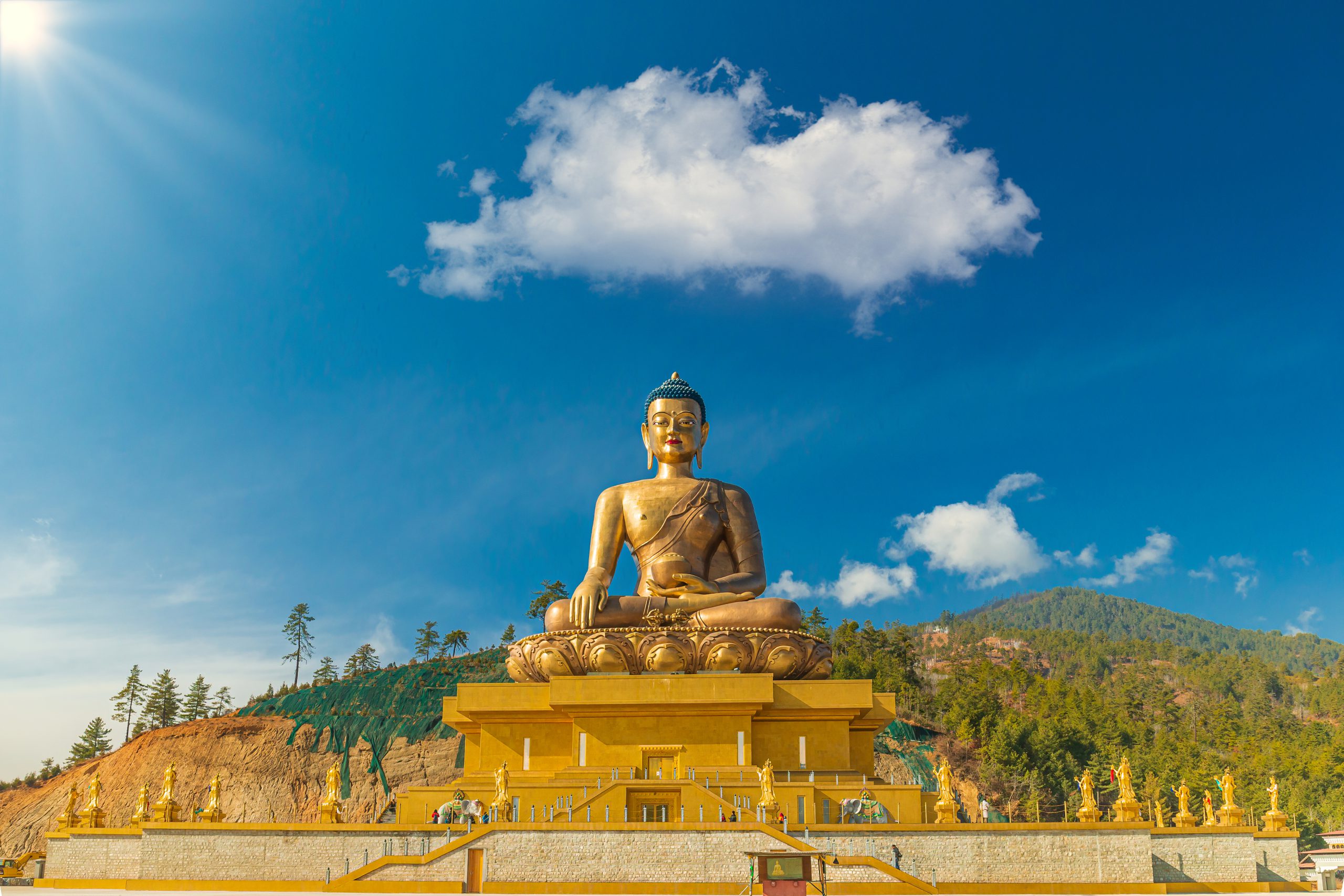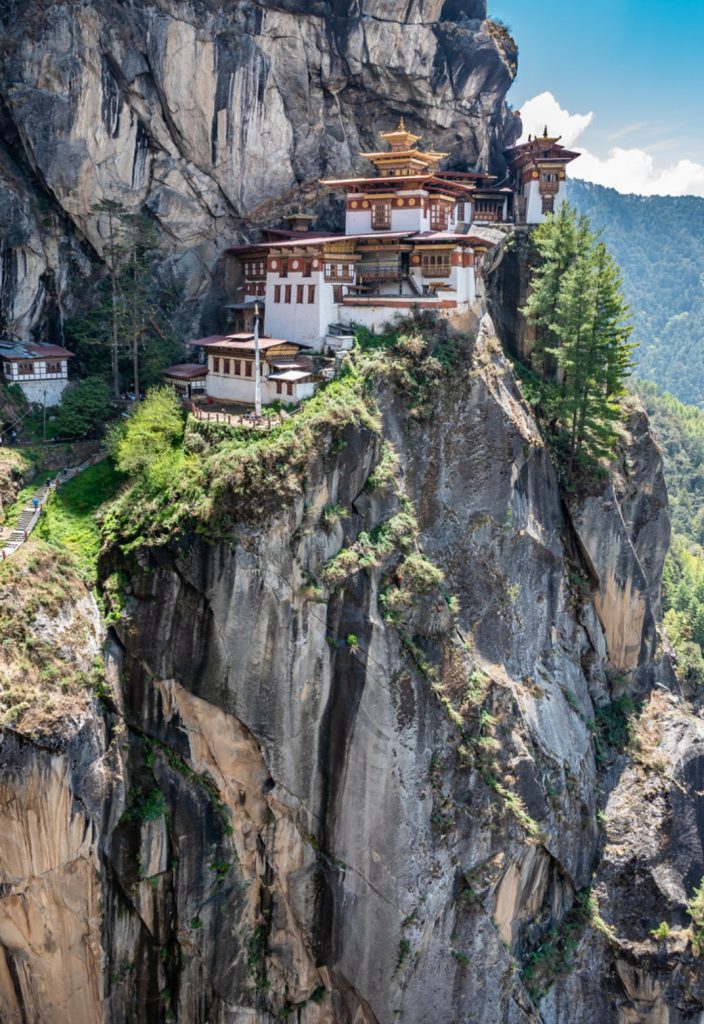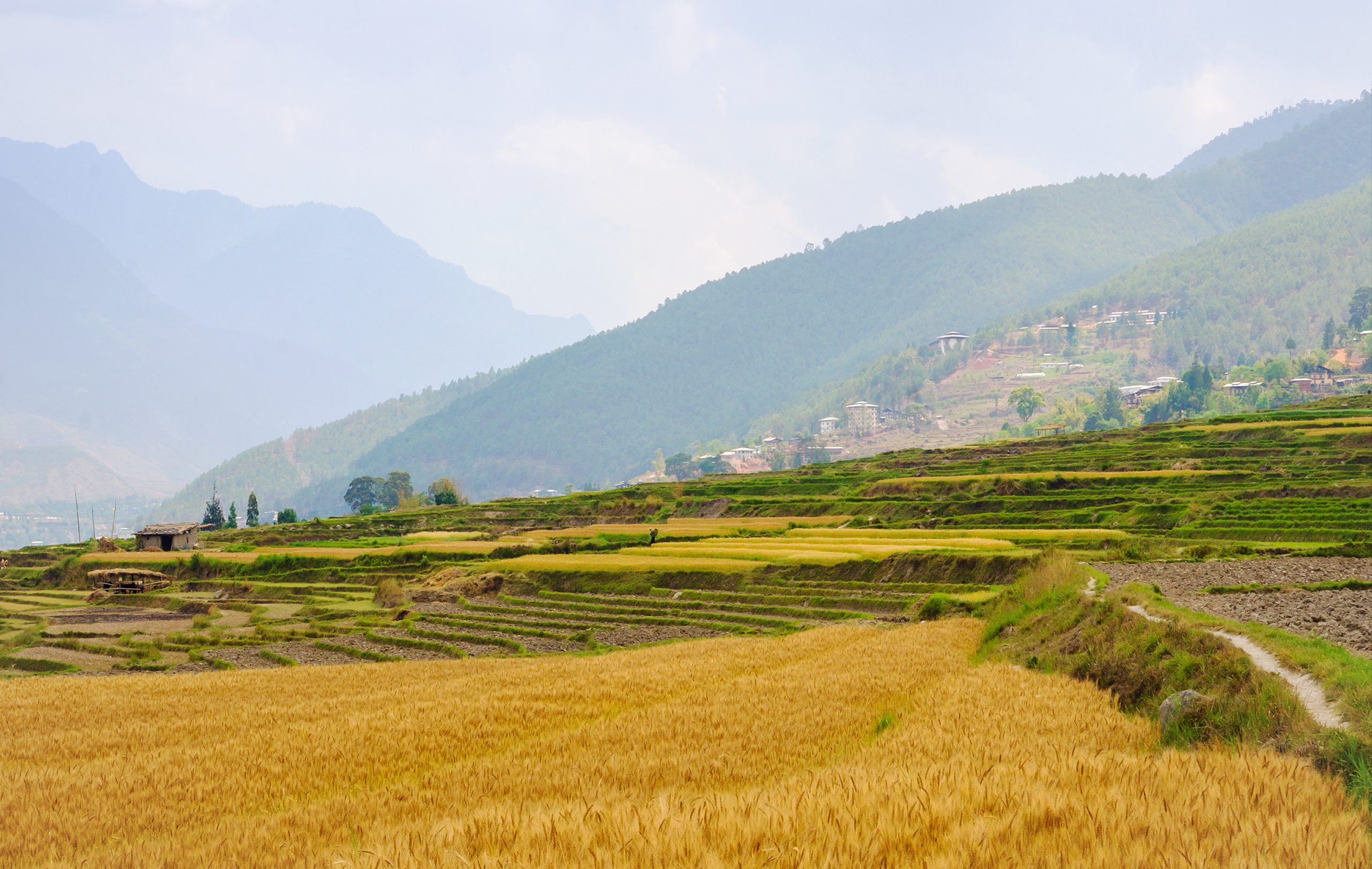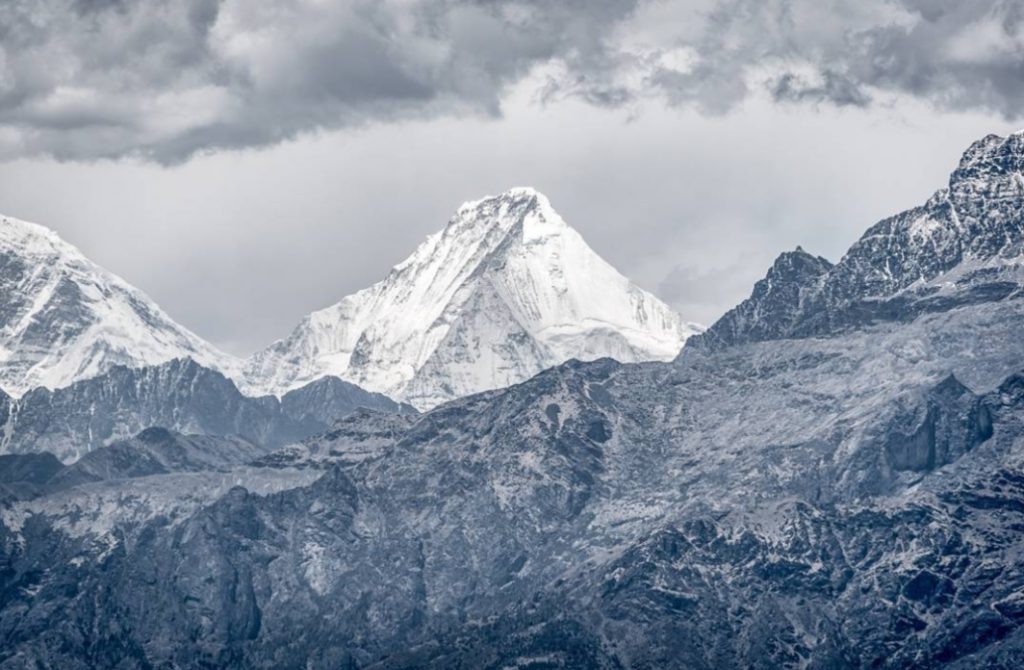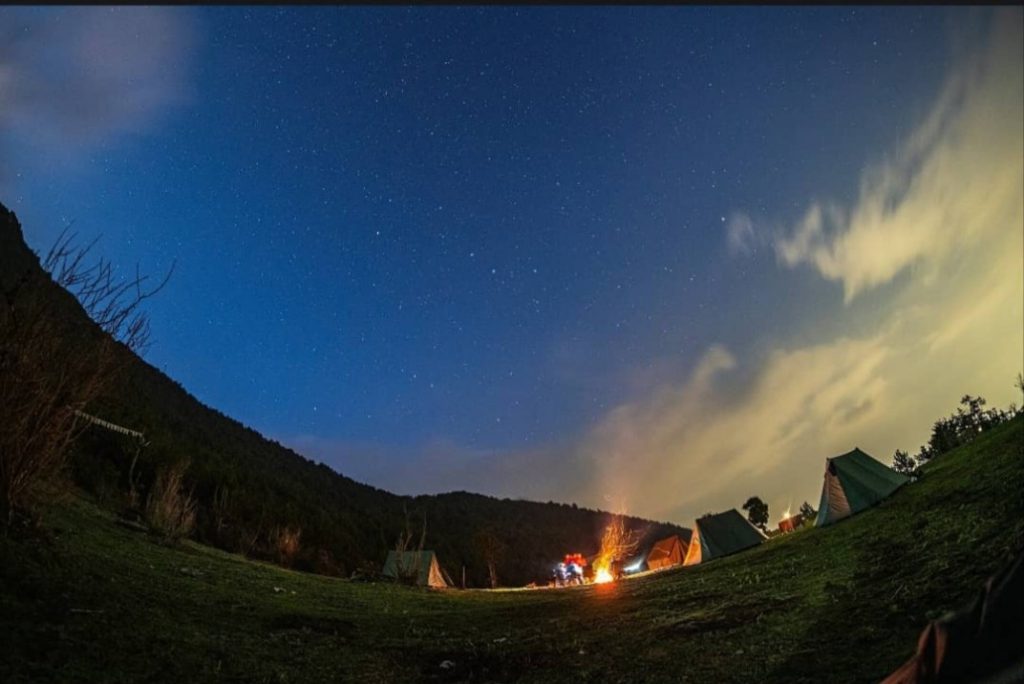It is believed that Zhabdrung Jigme Drakpa would watch from his zimkhang window, when his gomchen (lay monk) and village women practice for the annual tshechu. In his last 39 appearances as a dancer in the annual tshechu, Lhendup, who became a mask dancer from 18, said not a single dance has been performed at the goenpa courtyard without being routed from the Gangsa Pang. Every year, two weeks before the annual Talo tshechu begins, a group of lay monks and elderly women would arrive at Gangsa Pang, offers the first sacred offering and starts the practice of mask dances and folk songs.
Day 1 Arrival in Paro
Welcome to Bhutan, the Land of the Thunder Dragon. Touching down at Paro International Airport, you will be greeted by your guide upon arrival. Drive to capital city Thimphu, check in to the hotel and lets have your first taste of Bhutanese cuisine and some light sight-seeing, like the weekend market, in Thimphu.
Places to visit:
Heritage Museum – Dedicated to connecting people to the Bhutanese rural past though exhibition of artifacts used in rural households.
Textile Museum- explore the art of traditional weaving.
Simtokha Dzong– Five miles from Thimphu, on a lofty ridge, stands Semtokha Dzong the oldest fortress in the Kingdom.
Day 2 Thimphu to Punakha
Dochula Pass– The 108 chortens was built by the present Queen Mother of Bhutan Ashi Dorji Wangmo Wangchuk to commemorate Bhutan’s victory over indian militants and to liberate the souls of the fallen vets.
Punakha Dzong– Built in 1637, the dzong continues to be the winter home for the clergy, headed by the Chief Abbott, the Je Khenpo. It is a stunning example of Bhutanese architecture, sitting at the fork of two rivers, portraying the image of a medieval city from a distance.
Day 3 Punakha, Talo Tsechu
Today is the last day of Talo Tshechu. The Thongdrel will be unveiled early in the morning and then the different mask dances and folk dances will take place. Talo valley itself is a very beautiful valley with lush green environment rich in both flora and fauna.
The three day Talo Tshechu is well known for its mask and Atsara dances, but an equally popular attraction which has a deep religious and historical significance is the Zhungdra by the Talo dance troupe. The Zhungdra performance particularly Mani Sum (3 songs) are very close to the heart of the Talops (people from Talo). This is because Mani Sum was composed by Meme Sonam Dhondup, the grandfather of Zhabdrung Jigme Chogyal (1862-1904), the 5th mind reincarnation of the first Zhabdrung (1594-1651).
The three songs of Mani Sum are performed at the closing item on each day of the three day of the tshechu. The three Songs, Samyi Sala(performed on the first day), Drukpa Dungey (second day) and Thowachi Gangi Tselay on the final day.
Khamsum Yulley Namgyal Chorten– Built by the third Queen Mother Ashi Tshering Yangdon wangchuck this Chorten is a splendid example of the Bhutanese architecture. It has been built over eight and a half years and its details have been drawn from religious scripture.
Day 4 Punakha to Gangtey
The valley of Phobjikha is well known as the winter home of the Black necked crane (Grus Nigricollis). Bhutan is home to around six hundred black-necked cranes with Phobjikha being one of the popular places that the birds migrate to in the winter months from the Tibetan plateau. The elegant and shy birds can be observed from early November to end of March. This is an old monastery that dates back to 17th century. Today we will do some short hikes around the valley of Phobjikha.
Day 5 Gangtey to Thimphu
We will pay a visit to Chhimi Lhakhang -A 20 minutes walk across terraced fields through the village of Sopsokha from the roadside to the small temple located on a hillock in the centre of the valley below Metshina. Ngawang Chogyel built the temple in 15th century after the ’Divine Madman’ Drukpa Kuenlay built a small chorten there.
Heritage Museum – Dedicated to connecting people to the Bhutanese rural past though exhibition of artefacts used in rural households.
Textile Museum – explore the art of traditional weaving.
Thimphu Dzong- The largest Dzong, is also the seat of the office of the King of Bhutan.
National Memorial Chorten which was built in honor of the late King Jigme Dorji Wangchuk.
Paper making factory – witness the art of traditional Bhutanese paper making.
Simtokha Dzong – Five miles from Thimphu, on a lofty ridge, stands Semtokha Dzong the oldest fortress in the Kingdom.
Day 6 Thimphu to Paro
Today is the 2nd last day of the Paro Tshechu. Paro Tshechu is one of the most popular tshechu in Bhutan. People from all walks of life come to Paro to witness the festival. Tshechu festivals, honors Padmasambhawa, also known as Guru Rimpoche, the precious yogi and saint who is credited with having introduced Tantric Buddhism throughout the Himalayas. The festival’s masked dances are performed by monks clad in colorful brocade attire and permeated by chants and reading of Buddhist scripts. The culmination of festival constitutes the unfolding of a huge cloth thangka, a sacred scroll, depicting Padmasmabhawa and imagery from Buddhist pantheon. The mere viewing of the thongdrel.
Paro Valley – The beautiful valley is home to many of Bhutan’s old monasteries and temples. The country’s only Airport is in Paro. The valley is also home to mount Chomolhari (7,300 meters) situated at the northern end of the valley whose glacier water forms the Pachu flowing through the valley. The following are some of the prominent places to visit in Paro.
Paro Dzong – also known as Rinpung Dzong, this 15th century massive fortress/monastery, is also the administrative centre of the dzongkhag.
Ta Dzong- Built as a watch tower it was converted into the National Museum in 1968. The museum houses antique Thangka, textiles, weapons and armour, household objects and rich assortment of natural and historic artifacts.
Day 7 Paro
Drukgyal Dzong – A morning drive, north of Paro valley brings us to the ruins of Drukgyal Dzong. Built in 1647 by the great Shabdrung Ngawang Namgyal, father and unifier of medieval Bhutan, the Dzong was destroyed by an accidental fire and left in ruins as an evocative reminder of the great victories it was built to commemorate .Explore the ramparts and relive the memories of a glorious past.
Taktsang Monastery – A one hour hike to the cafeteria is also a vantage view whereby you can enjoy the stunning view of the monastery. Prayer flags adorn the cliffs and this is also where Guru Padmasambhava landed on the back of a tigress in the 8th century.
Kyichu Lhakhang – After a local lunch, we will retrace our steps to visit Kyichu Lhakhang, one of the oldest temples in Bhutan.
Day 8 Depart Paro International Airport.

